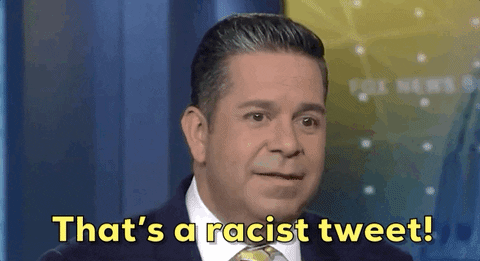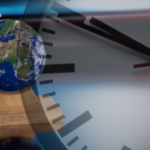Introduction to the GIF
The internet is a vibrant tapestry of memes, GIFs, and viral moments that shape our conversations and influence the way we express ourselves. Among these digital artifacts is the That’s Racist GIF – a simple yet powerful clip that has found its way into countless online exchanges. But what does this particular GIF signify? How did it evolve from an innocuous moment to a cultural touchstone in discussions about race and humor? As we dive deeper into the world of the That’s Racist GIF, we’ll explore its origins, controversies, and lasting impact on pop culture and social media. Join us as we unpack this multifaceted phenomenon!
Origin and history of the That’s Racist GIF
The “That’s Racist GIF” emerged from the popular culture landscape shaped by comedian and actor Daniel Tosh. It features a clip of him delivering a humorous critique on racially insensitive behavior, which resonated with many who found it both funny and thought-provoking.
First circulating in forums around 2009, the GIF quickly gained traction across platforms like Tumblr and Twitter. Users began to deploy it to respond to instances of racism or questionable comments in an ironic manner.
Over time, this GIF transformed into more than just a comedic response; it became a tool for social commentary. As conversations about race intensified online, its usage highlighted not only individual incidents but also broader societal issues surrounding racial insensitivity.
Controversy surrounding the GIF
The “That’s Racist GIF” has stirred significant debate since its rise to popularity. While many use it as a humorous response to blatant racism, others argue that such humor trivializes serious issues.
Critics point out that the GIF can sometimes perpetuate stereotypes. They argue that reducing complex social injustices to a simple reaction undermines the gravity of racial discrimination.
Moreover, context matters greatly. In some instances, using this GIF might come across as dismissive rather than constructive. This raises questions about whether it’s appropriate in conversations surrounding race and inequality.
As awareness grows around cultural sensitivity, discussions about this GIF continue to evolve. The line between satire and insensitivity is often blurred, leading users to reconsider how they engage with it online.
Impact on pop culture and social media trends
The That’s Racist GIF has carved out a unique niche in pop culture. It captures moments of absurdity and ignorance, acting as a visual shorthand for addressing racism without heavy discourse. This simplicity makes it easily shareable across social media platforms.
As memes proliferate, the GIF has become an emblematic response to racially insensitive comments or actions. Users employ it to inject humor into serious discussions, transforming potential arguments into light-hearted exchanges.
Trending hashtags often accompany the GIF, creating online communities where users unite against racism while sharing laughs. In this way, humor becomes a tool for activism.
Moreover, its presence encourages critical conversations about race and appropriates the power of digital storytelling. The GIF reflects broader shifts towards accountability in public discourse and highlights how satire can challenge societal norms effectively.
Cultural sensitivity and appropriation
Cultural sensitivity is critical in today’s diverse society. It involves recognizing and respecting the backgrounds and experiences of others. The That’s Racist GIF can sometimes oversimplify complex issues surrounding race.
When used carelessly, it risks trivializing serious conversations about racism. This happens especially when individuals from privileged backgrounds use the GIF to comment on situations that don’t directly affect them.
Appropriation adds another layer of complexity. It’s essential to understand the difference between appreciation and appropriation of cultures. Misusing cultural elements for humor can perpetuate stereotypes rather than challenge them.
The GIF, while humorous for some, may not resonate with those affected by racism daily. It’s vital to engage thoughtfully with these topics, ensuring that our responses are informed by empathy and respect rather than mere entertainment value.
Alternative reactions to racism
Racism elicits a variety of responses from individuals and communities. While some may rely on humor or sarcasm, others choose to confront issues head-on. Engaging in open dialogue can foster understanding and promote empathy.
Art has become a powerful medium for expressing dissent against racism. Musicians, filmmakers, and visual artists often use their platforms to challenge societal norms and provoke thought.
Moreover, grassroots movements play an essential role in advocating for change. These initiatives empower individuals to voice their concerns while promoting solidarity among marginalized groups.
Social media also offers alternative reactions through campaigns that raise awareness about discrimination. Hashtags can mobilize action quickly and unite voices across the globe.
How one reacts to racism varies widely based on personal experiences and cultural backgrounds. This diversity of response reflects the complex nature of addressing prejudice in society today.
The future of the That’s Racist GIF
The That’s Racist GIF has woven itself into the fabric of online discourse. It serves as a quick, sharp response to instances of racism that emerge on social media. As conversations around racial justice continue to evolve, so too will the usage of this GIF.
Future iterations might see it adapted for various platforms or even blended with new memes. Creators could customize it to address specific contexts or cultural nuances, making it more relevant.
As awareness grows around issues of race and representation, users may seek alternative expressions beyond humor. The GIF’s role could shift from mere reactionary tool to one promoting deeper understanding and dialogue about racism.
Embracing these changes will determine its longevity in digital culture. Whether it fades away or transforms into something more significant depends largely on how society navigates ongoing discussions around race and identity.
Conclusion
The That’s Racist GIF has undoubtedly left an imprint on digital culture. Its origins rooted in a critical discussion about race and racism have elevated it to more than just a meme; it serves as both commentary and catharsis. The controversy surrounding its use demonstrates the complexities of humor when addressing sensitive topics, prompting us to reflect on our own reactions.
As we navigate through social media trends that continue to evolve, it’s essential to consider cultural sensitivity. The GIF can serve different purposes for different audiences, highlighting the need for awareness and thoughtfulness in how we communicate online.
Looking ahead, discussions around the That’s Racist GIF will likely persist as society grapples with issues of race and representation. As new memes emerge, their ability to challenge or reinforce stereotypes remains crucial in shaping public discourse.
This ongoing dialogue reinforces that while humor can be a powerful tool for change, it requires careful handling to foster understanding rather than division. It’s clear that the journey with this GIF is far from over—it continues to spark conversations about what constitutes acceptable humor in today’s world.







